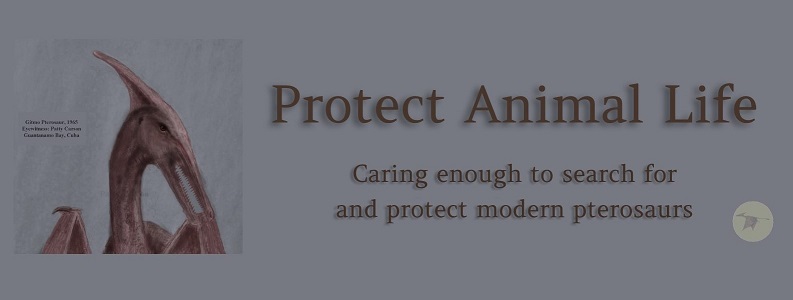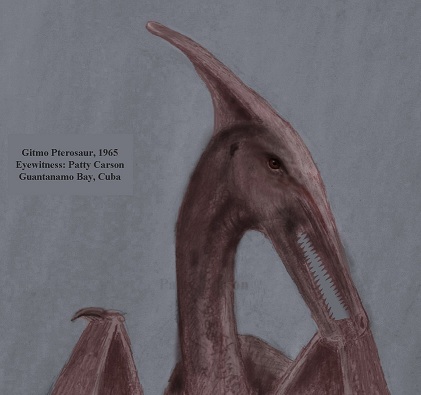By the investigative journalist Jonathan Whitcomb
The following is to the best of my knowledge, as of early September 27, 2019, regarding Youtube channels that have videos about eyewitness reports of apparent modern living pterosaurs, including the ropen.
Only two Youtube channels have many videos about these featherless flying creatures:
- “Jonathan Whitcomb” (obviously my channel)
- “Protect Animal Life” (also one of my channels)
The first is much older and has many views on most of its 9 active videos about living pterosaurs. The most popular is “Ropen-Pterodactyl – American eyewitness” (with over a third of a million views).
The second channel has fewer views but has been much more active in the last six months: It now has 27 active videos about these amazing flying creatures of the night.
Here’s the most recently uploaded video on the first channel:
The above video answers a question that few persons have ever wondered about, although it is relevant to living-pterosaur investigations: Why did the gigantic ropen of Umboi Island fly over the crater lake Pung, just a few minutes after the seven island boys had arrived at that lake? That was in the middle of the day, and the ropen is generally a nocturnal flying creature. This video gives a simple explanation.
Active Videos on the Channel “Jonathan Whitcomb”
- Ropen Sighting at Lake Pung – Why?
- Dragons and Pterosaurs Trailer 1
- Grantsville Flying-Creature Sighting in Utah
- Brief introduction to living-pterosaur investigations
- Ropen expedition by Whitcomb (2004)
- Ropen-Pterodactyl – American eyewitness
- Abram sees the ropen (maybe fishing)
- Grave robbery by the ropen pterosaur
- Spiders of Umboi Island
- Three Eyewitnesses of the Ropen
Both Youtube channels have videos about sightings in Papua New Guinea and in North America.
###
.
Free online videos about modern pterosaurs
As we approach the 15-year anniversary of my ropen expedition on Umboi Island, I’ll share my views on some Youtube videos and playlists: about these amazing flying creatures. You choose which ones to watch.
.
The most active Youtube channel on ropens (and other living pterosaurs), as of mid-2019
.
Over the years, I’ve rarely mentioned much on this blog about the possibility that ropens in general are covered with some amount of fine hair. Only a small fraction of the total eyewitnesses have been close enough to see such a detail, even if they had a mind to take notice of hair, or lack thereof, at the time of their sightings.
.
The oldest and most popular Youtube channel having many videos about living pterosaurs
.
.




